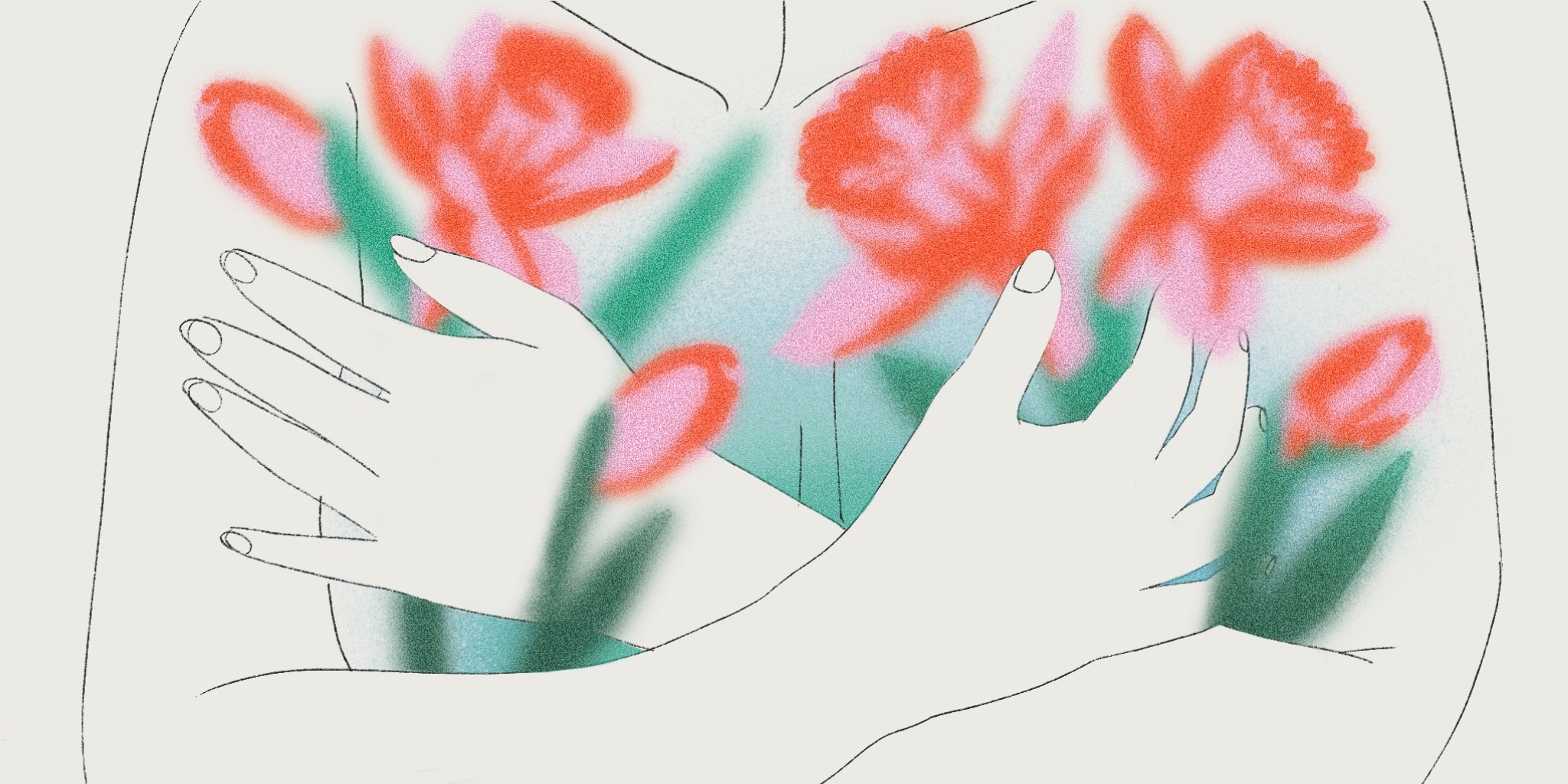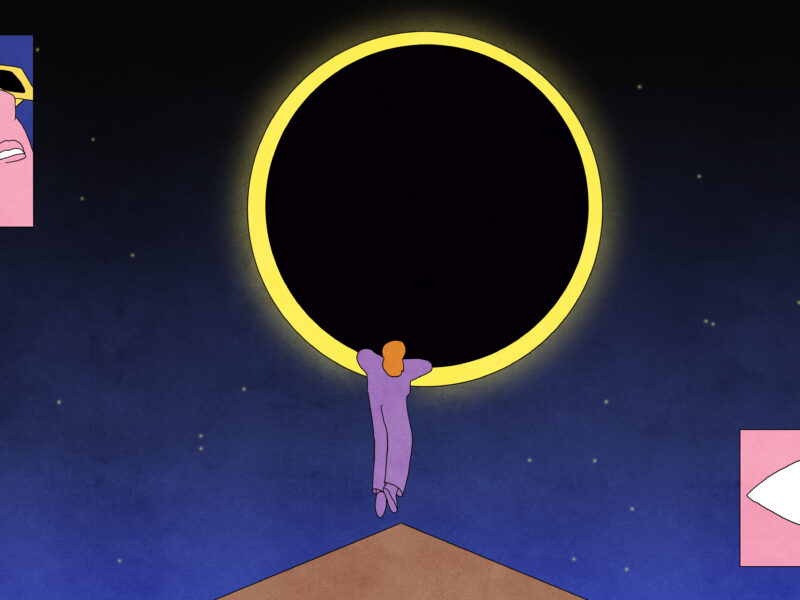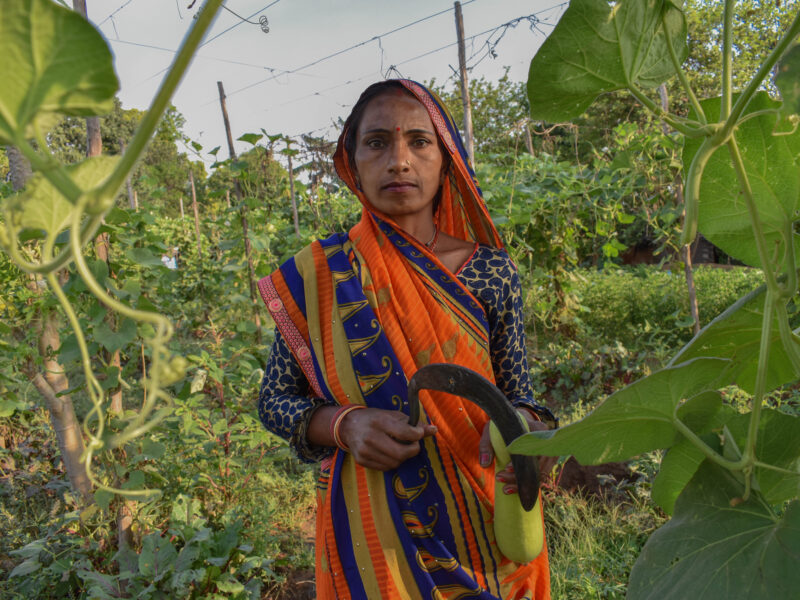After my daughter was born, I struggled to produce milk. Why did I feel like I had to keep trying?
When I was sixteen, I went to see my mother in a community theater production of John Steinbeck’s The Grapes of Wrath. Though Mom performed a chilling death scene as Grandma Joad, it was the character at the center of the play, a young woman named Rose of Sharon, who ended up haunting me. In the third act, Rose has just given birth to a still born baby—a particularly cruel fate given what the Joad family had already endured on their journey West. But then, grieving and broken, the family encounters a young boy and his father, who is dying of starvation, in an abandoned barn. Rose of Sharon, with her milk having just come in, unbuttons her blouse and nurses the dying man back to health.
Even as a teenager, I sensed some great superpower, a gift that I couldn’t wait until it was my turn to receive.
~
A few years later at a coffee shop, I watched a young mother, dressed in a blue tube top with light brown hair hanging down to her waist, wrestle with her hungry baby. I stared transfixed as she casually pulled down her top and popped out a small, perfect breast. Her baby immediately latched on. The woman was sitting in the window, warm afternoon light flooding behind her, and for a moment, she seemed to occupy a holy air: her long hair curtaining them off as the baby nursed with a practiced ease, a profound sense of calm flowing outward from them.
~
In December 2021, a few days before Christmas, I gave birth for the first time. Immediately after cutting the umbilical cord, my daughter was put to my breast; I felt a little pull and suddenly she was working away. I gasped. We stayed like that for about an hour, completely still except for her suckling. Her cheeks and my breasts were both so large at that point it was hard to know where she ended and I began. It would be the last time that breastfeeding was easy for us.
Two days later, I was told by a nurse that my daughter’s weight had dropped and that she probably wasn’t latching correctly. A lactation consultant kindly showed me a better angle to hold the baby while nursing. I adjusted. My daughter latched on. “Everyone thinks the cradle way is easiest,” she said. “But that’s because of what we see in the movies.” And in literature, and plays, and paintings, and in coffee shops, I thought.
I believed everything was going fine until around 3 AM the following morning, when I was awoken by another lactation consultant, this one much harsher than the last. Standing over my bed, she sported a neon fanny pack and a buzz cut on one half of her head, her vibe much closer to Nurse Ratched than Mother Theresa. I honestly can’t remember most of what she said, except for one phrase that she repeated over and over: “This is an emergency.” She told me that my milk hadn’t come in yet because I’d had a c-section and my body was prioritizing healing. Strike one against mama, the c-section. Strike two, bad nipples.
My husband and I were directed to feed the baby tiny bottles of formula while I was put on a pumping schedule of every two hours for fifteen minutes at a time. By the time I left the hospital, my nipples were cracked and bleeding, looking like a pair of skinned knees. According to Ratched, the clock began when I started the pump, not when I finished, which, after the obligatory clean up and sterilization of the pump’s various parts, meant that I was sleeping in bursts of an hour to an hour and a half. I started to lose my grip on reality from the sleep deprivation. All the while, nothing was coming out.
Once we got home, I became obsessed with solving the riddle of my broken breasts. I saw a total of six lactation consultants. According to these experts, I had already done so much wrong: taking Dayquil when I came home from the hospital with a cold, sleeping through a couple of my pumping alarms, not being hydrated enough, not eating enough calories, being too stressed for the oxytocin to release and help the milk flow. So I ate all the lactation cookies, drank all the teas they recommended, and even went to an acupuncturist. I created Excel spreadsheets to track my progress, which I made my husband and mother fill out in detail every time they fed the baby. I continued the relentless pumping schedule that had been prescribed to me.
To make matters worse, I was spending less and less time with my baby. I was still trying to nurse her, still trying to recreate every beautiful feeding scene I’d witnessed, but the reality was that until I started to produce milk, she still needed to eat, and the bottle kept her from being interested in the breast. I’d always heard that newborns were like breathing, dreaming appendages, attached so firmly for the first few months that they don’t feel like separate beings. But whenever I looked down, instead of seeing my baby, there was only a mess of wires, and a buzzing pump always alerting me that I was more machine than mother. Over the constant noise, I’d strain to hear her cooing and crying from the other room, where my husband and my own mother held her, and changed her, and fed her.
~
One morning, I woke up with a breast infection so painful it made me forget the intense abdominal surgery I’d just undergone to remove my daughter from my womb.
I’d known about mastitis and blocked ducts, but this felt like broken glass inside my nipples, now shiny and hot as though they each had their own intense fever. One nurse told me she thought it could be thrush, a type of fungal infection, but another was suspicious since my baby didn’t have it in her mouth. A third said I just needed to “toughen my nipples up” and suggested dipping them in black tea. But the more I pumped and tried to nurse, the worse the pain became. I had stopped taking the powerful painkillers prescribed for my c-section recovery, but started taking them again to deal with this new agony. (Later, after I moved to formula feeding exclusively, the pain lessened but still took months to go away altogether.) It seemed to me that my body was saying something important, something it had long been trying to tell me but that I wouldn’t let myself hear. I walked around in a cloud of such sadness that I felt like my soul had the flu.
My pregnancy had been difficult. Almost immediately, I’d developed hyperemesis, which is like morning sickness on steroids. It had landed me in the emergency room twice with dehydration, and once at the dentist when a molar, weakened by copious amounts of stomach acid, disintegrated and fell out of my mouth. I had imagined myself as a pregnant glowing earth mama, all supple curves, completely in tune with nature and myself, but there were times the vomiting was so extreme that I just wanted to die. Then, I had a c-section, further cementing the idea that my body wasn’t meant to do this at all. That my breasts could not “correctly” produce milk was the final nail in the coffin.
The internet, unfortunately, agreed with me.
At the same time that I was struggling to produce milk, America experienced a terrifying formula shortage after a contaminated batch at an Abbott plant led to a widespread recall, revealing the fragility of the formula supply that so many families depend on. But for every woman who was vocal about how the shortage should be considered a national emergency, there was someone, usually a man, asking why women couldn’t “just breastfeed.”
Suddenly total strangers from around the world were chiming in to validate my inadequacy. But in the midst of this turmoil, my breasts still vibrating with mysterious pain, rather than feel rage or frustration, I felt a perverse relief. The world seemed to agree with that little nagging voice in the back of my head. I simply wasn’t meant to be a mother.
~
How much of the breastfeeding debate is really about the health of the child, and how much is about the control of women’s bodies and, moreover, about the performance of successful womanhood?
I found myself thinking about this question a lot in my baby’s first months of life. The internet’s unsympathetic reaction to the formula shortage further demonstrated that many believe the difficulty of breastfeeding to be a modern predicament; that as women have gotten more agency, and more rights, they’ve abdicated more of their motherly duties. But breastfeeding has been complicated since the beginning of time. Women have always experienced issues like mastitis, which before the advent of penicillin was an often fatal infection. And babies have always experienced tongue ties, premature births, and trouble latching. Add to that centuries of malnutrition, as well as external traumas like giving birth in famines, war zones, or while enslaved, and the body’s ability to produce milk becomes less and less likely. We’ve always needed alternatives.
Before formula, parents searched far and wide for methods to replace breast milk. Author Carla Cevasco notes in The Atlantic that early options ranged from cow’s milk to bone broth and nut milk—some of which provided hydration but not necessarily nutrition, and could be deadly due to contamination and poor food preservation capabilities. Historically, the surest way to keep a baby fed was a wet nurse, another woman who had also recently given birth and could breastfeed. Wet nurses were commonly poor or enslaved women who were forced, either by poverty or slaveholders, to feed other’s babies as their own starved at home.
These women’s experiences should remind us that the history of formula feeding is not a stain against a woman’s ability to mother, but in fact quite the opposite: a testament to the incredible act of keeping one’s baby alive.
I knew all this, so why couldn’t I let myself believe it? I thought of every poster hanging in every doctor’s office, waiting room, and maternity ward that depicted mother and child in complete harmony with the tagline “breast is best”—a mantra made popular in the 1950s by a group of Catholic women who called themselves La Leche League and believed breastfeeding was “God’s plan.” And I couldn’t stop seeing that young mother in the coffee shop from my twenties, how she had no problem nursing her infant, the two of them a recreation of every painting I’d ever seen of Madonna and child come to life.
Even before getting pregnant, I had already internalized the cultural messages surrounding breastfeeding so deeply, it had become something much bigger than a simple act. It had bloomed into a dangerous omen.
~
During my maternity leave, my husband and I spent the late nights re-watching the entire seven seasons of Mad Men. In one episode, a pregnant Betty Draper, played by January Jones, gets asked by a nurse whether she intends to breastfeed. Betty answers with a bored “no” and the nurse nods in agreement. My husband was shocked. Here we were, struggling so intensely, and there was Betty, not even intending to try. What’s more, no one seemed to have a problem with it.
Where my husband saw a kind of permission for formula feeding, I saw something different: an inverse reflection of the very expectations I had failed to live up to, and that are placed on so many birthing parents, regardless of gender. In the 1960s, formula feeding became the norm, with, as historian Amy Bently writes, only 20-25 percent of babies starting their lives being fed breast milk. The primary reason for this shift was the urging of pediatricians who were intent on lowering the infant mortality rate, and saw formula feeding as a more consistent and regimented way to keep babies fed and alive. More women were also working outside the home and needed to be able to leave their infant with a caregiver as they went into the office.
Little of this was relevant to Betty, a wealthy housewife who didn’t work—and so her reasons for bottle feeding were probably similar to the reasons I wanted to breastfeed: It was a cultural marker of being a “good woman.”
~
After six excruciating weeks, the end of my breastfeeding journey was sudden, unexpected. Eventually, when calling the nurse for the umpteenth time to describe a new pain in my breast—a swelling lump that hurt to touch—I received the kindest advice I’d been given thus far. “Honey, just give up,” she said. “You don’t need to do this.” Her tone was frank but measured; her South Boston accent rough but comforting. I didn’t know how much I’d needed her permission to stop.
I was free—almost. For a couple more weeks, I still tried to nurse, but then during a blizzard that lasted the weekend, I gave up cold turkey. I made my husband run out into the storm to collect little baggies of snow that I would then sneak into my bra sandwiched between cabbage leaves, an old wives’ remedy for weaning. Lying on the couch, icing my swollen breasts, I thought about how on New Year’s Eve, just a few days after we’d returned from the hospital, my husband and I had waited for the clock to strike midnight, my baby in my arms. While giving her a bottle, I started to cry. “Why can’t I feed my child?” I asked him. “Look at you right now,” he replied. “You are literally feeding your child.”
I glanced down at my daughter, her eyes wide, slowly blinking, and saw her taking in all of me. The Christmas tree lights glimmered behind us, lighting us both up with a starry glow. How long had she been staring at me like that? I wondered. Her tiny hand wrapped around my finger, her skin pressed against my skin. I felt like I was seeing my baby for the first time, and noticed that I was, in fact, feeding her.



